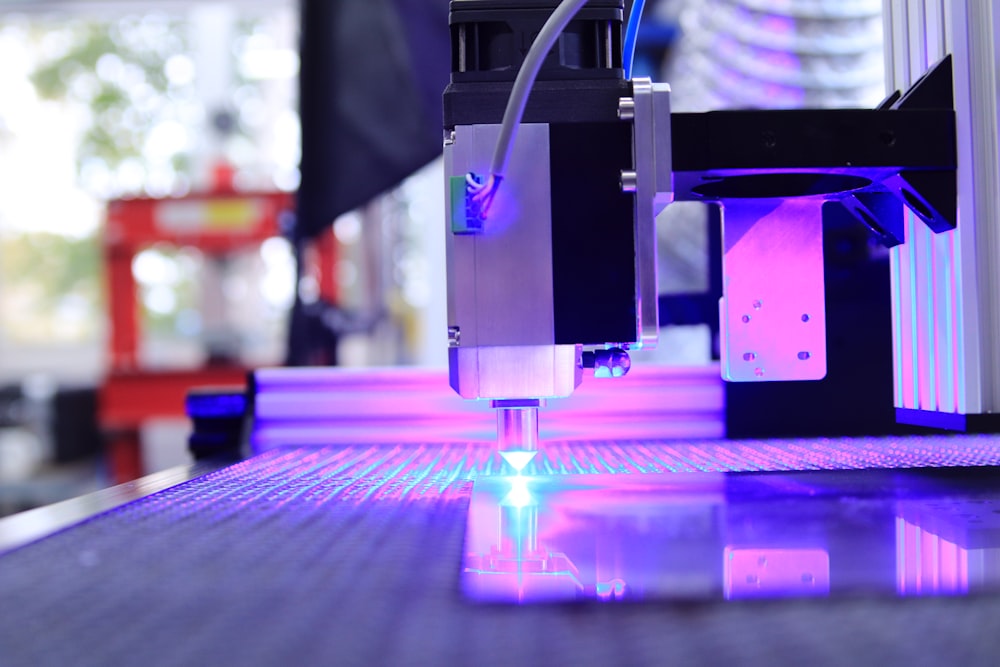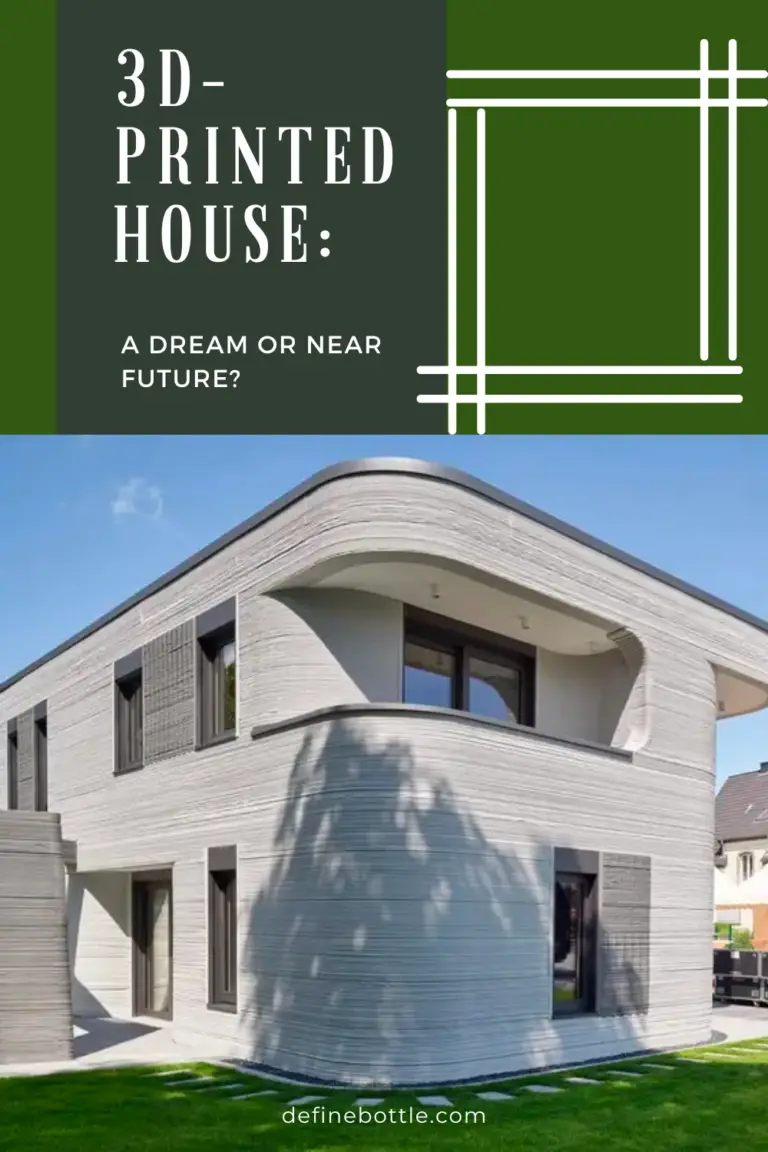In recent years, technology has reached unimaginable heights, making dreams of the past seemingly more achievable than ever.
One such marvel is the concept of a 3D-printed house.
Photo by Opt Lasers on Unsplash
As intriguing as it may sound, the question remains if this concept is just a pie in the sky or something we are going to witness in the near future.
Contents
The Revolution Of 3D Printing
3D printing, also known as additive manufacturing, has been around since the 1980s.
It is a process that creates three-dimensional objects by layering materials based on digital models.
Initially used for prototyping in industries such as automotive and aerospace, 3D printing has evolved into much more.
Printing Houses In The Future
One of the most impressive applications of 3D printing is the possibility of printing houses.
This isn’t just theoretical; there are already instances of 3D printed homes around the world. However, the idea of this becoming a norm is still budding.
The notion of printing houses implies a construction method that can drastically reduce costs, enhance customization, and potentially solve the housing crises in many parts of the world.
Moreover, 3D-printed homes may also play a crucial role in providing quick relief in disaster-stricken areas where traditional construction methods may be impractical.
Impact On the Construction Industry
The integration of 3D printing in construction holds the potential to revolutionize the industry.
As the technology matures, we may see a shift from traditional construction methods to 3D printing, particularly for residential buildings.
This can lead to a significant reduction in construction time, material waste, and labor costs.
For instance, 3D printing enables the creation of complex designs with ease, which would be impossible or very costly with conventional construction techniques.
This may pave the way for new architectural designs that have been previously unimaginable.
Environmental Implications
As we are becoming increasingly aware of our impact on the environment, 3D printing presents itself as an eco-friendly alternative.
By using materials more efficiently, there is a significant reduction in waste compared to traditional construction methods.
3D printing technology can utilize recycled materials, thereby reducing the demand for new resources.
This could be particularly beneficial in reducing the environmental footprint of the construction industry, which is traditionally known for high levels of resource consumption and waste.
Challenges And Limitations Of 3D Printed Houses
Despite the potential, 3D-printed houses are not without challenges and limitations that need to be overcome before they can become mainstream option for housing.
Technical Challenges
3D printing technology is continuously evolving, but there are still technical challenges that need to be addressed.
For example, the range of materials that can be used for 3D printing houses is currently limited. This restricts the types of houses that can be built, particularly in extreme weather conditions.
The printers themselves are massive and can be difficult to transport to construction sites.
Regulatory Hurdles
As with any new technology, there are regulatory hurdles that must be overcome.
Building codes and regulations are established based on traditional construction methods, and adapting them to 3D printing technology is a complex task.
It requires thorough testing and validation to ensure that 3D-printed houses are safe and compliant with existing standards.
Public Perception
Perhaps one of the most significant challenges for 3D printed houses is public perception.
Many people are still unfamiliar with the technology, and there may be skepticism regarding the durability and safety of 3D printed homes.
Convincing potential homeowners that these houses are a viable option will be a vital aspect of making 3D-printed houses mainstream.
The Path Forward For 3D Printed Houses
With challenges identified, it is essential to determine how 3D-printed houses can transition from being a novelty to a standard housing option.
Collaborative Efforts
For 3D printed houses to become mainstream, there needs to be collaboration between various stakeholders including governments, industry players, and educational institutions.
This collaboration is essential for addressing the technical and regulatory challenges, and for driving innovation in 3D printing technology.
Education And Awareness
Addressing the public perception challenge requires a dedicated effort in education and awareness.
This includes showcasing successful examples of 3D-printed houses and educating the public on the benefits and potentials of this technology for housing.
Economic Viability
Lastly, for 3D printed houses to be adopted widely, they need to be economically viable. This means that the costs associated with 3D printing technology need to be competitive with traditional construction methods.
Financing options need to be available to make these houses accessible to a broader range of potential homeowners.
Key Considerations
In wrapping up, it’s imperative to recognize that 3D-printed houses symbolize a seismic shift in the realm of construction and housing.
While still at a nascent stage, the very concept illuminates the limitless possibilities that lie in melding technology with our basic needs, such as shelter.
A careful analysis suggests that this is neither a fleeting fantasy nor an unattainable dream, but a tangible reality taking form with each passing day.
The potential impact on the construction industry, environmental sustainability, and housing affordability is monumental. 3D printing in construction promises not just innovation in design but a fundamental alteration in how we perceive and create living spaces.
The environmental dimension is particularly crucial as the world grapples with resource depletion and climate change.
By leveraging recycling and optimizing material usage, 3D-printed houses can be a cornerstone in the construction of a more sustainable future.
However, with every breakthrough comes a set of challenges. Technical, regulatory, and perceptual hurdles are the barriers that this technology must overcome.
The task is not solely on the shoulders of inventors and entrepreneurs; it’s a collective responsibility that requires an integrated approach involving policy-makers, academia, industry veterans, and the general public.
Undoubtedly, economic viability will play a decisive role. The technology must be not only innovative but accessible. Incentives, subsidies, and funding in research and development could be the catalysts needed to expedite the adoption of 3D printed houses.
All things considered, 3D printed houses stand on the precipice of becoming a mainstream alternative to traditional housing.
They embody innovation, sustainability, and accessibility. Through continued perseverance, collaboration, and embracing technology, society is poised to step into a new era where 3D-printed houses are an integral part of communities around the globe.






